Carbon fiber has proven to defy convention prompting its extensive use in conventional engineering.
Unlike most materials, this carbon fiber promises a unique balance between strength and lightness making it your ideal solution for crafting a myriad of exceptional components.
What is Carbon Fiber Machining?
Carbon fiber machining involves a series of cutting and fashioning composites of carbon fiber to give you functional carbon fiber components like heat shields and golf clubs.
The unique nature of carbon fiber presents a number of machining challenges meaning you have to adopt specialized machining techniques.
For instance, waterjet cutting can be used to overcome the material’s rigidity and firmness.
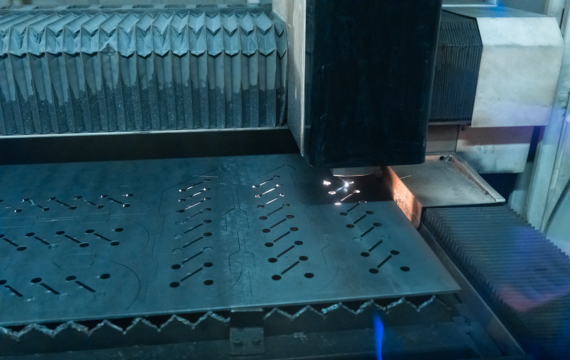
Carbon Fiber Properties That Make It Ideal for Machining
Carbon fiber’s roughness has been exploited to make aircraft components. Such components can withstand roughness of rocket launching while its lightness has been manipulated to make high-tech gadgets.
Its unique set of characteristics makes carbon fiber the ideal raw material for manufacturing a range of essential components. These traits include;
- Structure: It boasts a crystalline structure, which gives it impressive rigidity and stiffness. By combining its fabric with distinct resins, you can come up with unique carbon fiber composites that you can ultimately machine into complex components.
- Thermal Conductivity: Its comparatively low thermal conductivity translates into less heating during machining. This is essential as it protects your workpiece as well as your machining tool from unprecedented damage.
- Tensile Strength: Comprising numerous carbon atoms aligned to make a crystalline structure, carbon fiber boasts remarkable tensile strength. You can rest assured it will endure the pulling forces and vibrations synonymous with machining.
- Abrasiveness: Although this is often considered a limitation, it proves the rigidity and durability of components you make using carbon fiber. These constituents can withstand wear and tear over extended periods.
- Compressive Strength: You can drill into a carbon fiber workpiece without having to worry about it fracturing thanks to its high compressive strength. This also makes it ideal for crafting structural components like bridge supports.
Carbon Fiber Machining Operations
As impressive as carbon fiber is as a manufacturing raw material, you cannot hide from the complexity of machining it. Some of its remarkable features present machining challenges hence necessitating unique machining operations including:
· Carbon Fiber Turning
Turning manipulates the shape of your carbon fiber workpiece by subjecting it to a linear cutter as it oscillates on the lathe machine. It attempts to give your final carbon fiber component a cylindrical form. However, you can use it to face your workpiece or even install recessed grooves.

Benefits
- Crafts high-tolerance carbon fiber components.
- Achieves smooth finishes without the need for extra machining.
- Creates intricate spherical carbon fiber components or complex cylindrical contours on your components.
- Its accuracy eliminates the need for additional refining operations.
· Carbon Fiber Waterjet Cutting
This carbon fiber machining operation leaves precise edges on your carbon fiber workpieces and it only utilizes pressurized water (over 90,000 psi) to make your prescribed cut.
For more effective cutting, you can supplement your water jet with an abrasive element such as garnet. The only downside of this operation is the consequential abrasion of your cutting tool.
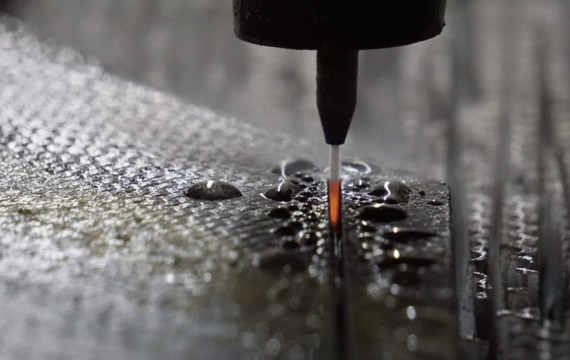
Benefits
- Reduced risk of machining tool degradation.
- No heat generation during machining.
- Reduced material wastage.
- Accurate cuts.
- Complex patterns.
· Carbon Fiber Sawing
This is inarguably one of the most prominent carbon fiber cutting techniques and it relies on an unconventional cutting tool (saw) to dissect your workpiece. It is a cheaper alternative to waterjet cutting and laser cutting.
However, it may lead to the premature wearing of your workpiece especially around the edges and you risk inhaling carbon fiber dust. Here are some sawing techniques for you to exploit;
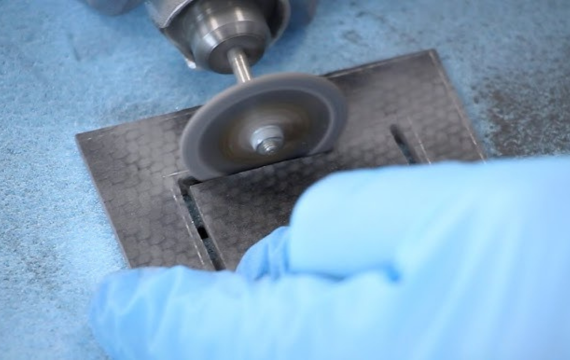
- Band Sawing: This sawing method relies on a continuous blade to curve out accurate cuttings on your carbon fiber workpiece. It requires carbide-tapped band saws capable of enduring your carbon fiber’s rigidity. However, you might find band sawing relatively slower than modern cutting alternatives like laser cutting.
- Circular Sawing:Circular sawing involves the use of a spherical blade equipped with a specialized tooth geometry that allows for precise carbon fiber cutting. Your blade must however be carbide-coated due to the toughness of carbon fiber.
- Reciprocating Sawing: This carbon fiber sawing method is not often utilized like circular and band sawing. It, however, thrives in imparting simple patterns and shapes into carbon fiber components. When utilizing reciprocating sawing to impart complex geometries, you should be wary of its comparatively lesser precision.
Benefits
- Perfect for preliminary shaping.
- It is comparatively simpler.
- Portable sawing tools.
- Fairly fast.
· Carbon Fiber Drilling
Drilling carbon fiber should only be undertaken at a relatively lower speed and with a properly tipped drill bit. This will keep your drill bit in tip-top condition by averting heat generation that may lead to premature tool damage.
You can undertake this machining operation to instill fastener holes in your components or screw holes. It does not matter whether you are handling carbon fiber tubes or any other material, you can successfully drill holes in the material.
For effective machining, you should first understand the composite materials comprised in your carbon fiber before settling on a drill bit. Furthermore, make sure you employ a befitting cooling technique and use the recommended protective gear when drilling carbon fiber.
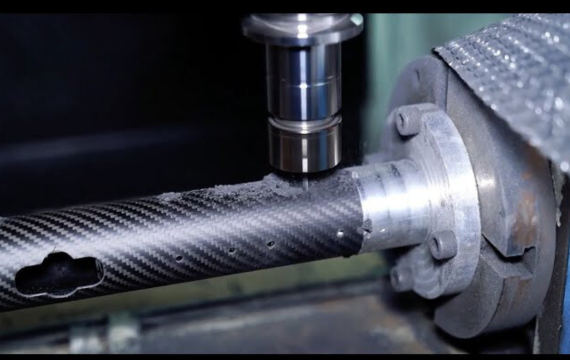
Benefits
- Allows you to integrate distinct carbon fiber constituents.
- Allows you to tailor your components for specific uses.
- Makes it easier for you to assemble and disassemble carbon fiber parts.
- Allows for precise cutting of fastening holes.
· Carbon Fiber Laser Cutting
Laser cutting requires you to focus a laser beam on the section of your carbon fiber workpiece, where you want to cut. This consequently leads to the melting of the laser-beamed part leaving you with clean edges.
You can rely on CO2 lasers whose infrared spectrum is roughly 10.6 µm or fiber lasers whose operating wavelength is approximately 1.06 µm.
While using laser cutting, you might experience carbonization as a consequence of Heat-Affected Zones. However, this machining operation will grant you greater control over your cutting operation thus allowing you to achieve a high degree of precision.
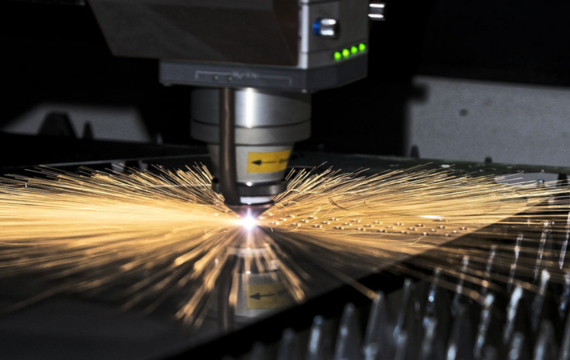
Benefits
- Quicker cutting.
- Clean and smooth edges.
- Fine cutting.
- No contact.
· Carbon Fiber Milling
Milling has thrived in shaping varying components for years and its use in crafting carbon fiber components and products continues to balloon by the day.
It relies on an end mill, which is essentially a rotating cutter fitted with multiple teeth to scoop out specified sections of your carbon fiber workpiece thus customizing its configuration and shape.
Given the hard nature of carbon fiber and its respective composites, your milling tool must be supplemented by a carbide coating or titanium nitride coating. If you are not careful during milling, you might risk weakening the structure of your carbon fiber workpiece.
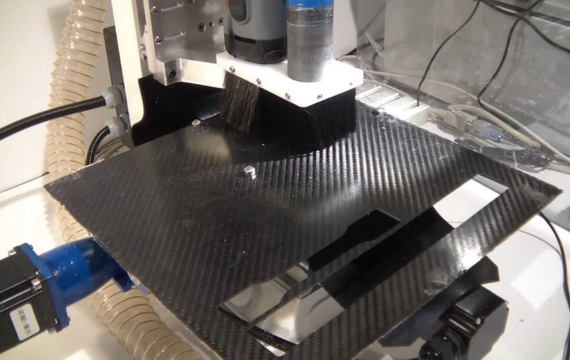
Benefits
- Can handle distinct types of cuts.
- Generates components with tight tolerances.
- Achieves flawless surface finishes.
- It is relatively fast.
- Easy to set up.
· Carbon Fiber Grinding
Carbon fiber grinding is specifically exploited to impart a smooth and high-quality finish to your carbon fiber constituents. Grinding operation simply relies on an abrasive wheel to scrap off unwanted parts that give your workpiece a rough or deformed surface.
In addition to smoothening your workpiece’s surface, you can also utilize grinding to shape it.
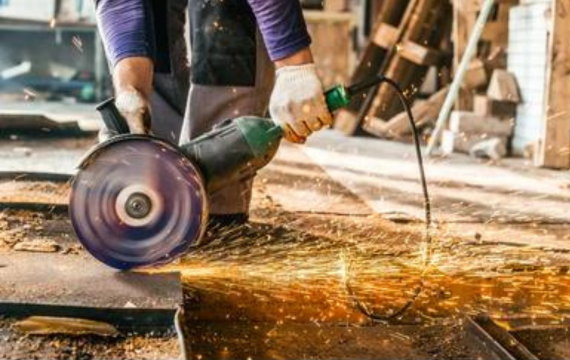
Benefits
- Leaves your components with a polished finish.
- Eliminates shaper edges.
- Thrives even when handling extremely hard carbon fiber workpieces.
- Highly accurate.
· Carbon Fiber Routing
Routing has often been associated with machining wooden components. It however thrives just as much when it comes to carbon fiber machining.
It involves the deliberate extraction of unwanted material to shape your carbon fiber workpiece or engrave decorative features. All you need is a specialized router bit capable of withstanding the roughness of carbon fiber composites.
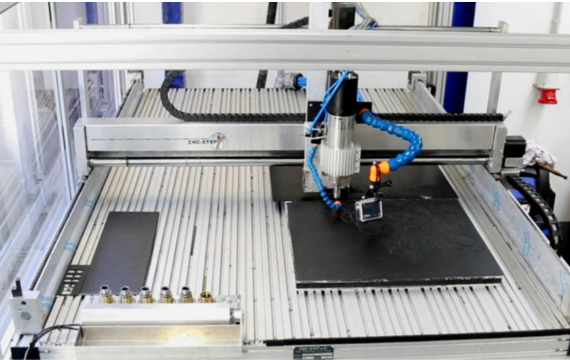
Benefits
- Allows you to impart internal grooves and features with complex geometries.
- It does not result in material wastage, which is essential given the value of carbon fiber.
- It generates low heat during machining.
- Often utilizes dust collection mechanisms saving you from inhaling carbon fiber dust.
- It is hardly susceptible to delamination.
Benefits of Carbon Fiber Machining
Be it in electronics manufacturing or aerospace components manufacturing, carbon fiber has always been highly appreciated. This unique material promises an array of distinct upsides including;
- Machining carbon fiber promises superior-quality finished components characterized by lightness and rigidity.
- It allows you to craft unique carbon fiber constituents in line with your specific use requirements.
- During machining, you are less likely to experience heating, which can damage your workpiece and degrade your machining tool.
- Carbon fiber machining hardly requires you to initiate additional polishing operations like surface finishing since it organically generates high-quality parts.
- The rigidity of carbon fiber is mirrored in the resulting components, which demonstrate a high fatigue resistance.
- It comes with long-term financial benefits since it generates remarkable components with relatively longer service lives.
Limitations of Carbon Fiber Machining
Given the exceptional features of carbon fiber, disregarding it in your next machining project would be quite unwise. However, it would also be unwise of you to disregard the hurdles that come with machining it. They include;
- Tool Wear: When machining carbon fiber, especially using ordinary cutting tools, you are likely to incur more costs in tool replacement. However, you can thwart this by using specialized cutters, coated with elements like carbide.
- Chip Generation: As you machine carbon fiber, shaven debris will be generated and you will need an effective chip extraction system. Failure to which may complicate your machining operation. Exhaling the resulting dust can also leave you with respiratory health issues.
- Delamination: Certain machining operations interfere with the crystalline structure of carbon fiber. This weakening leads to finished components with degraded qualities. This emphasizes the need for careful, controlled, and slow machining.
Suitable Carbon Fiber Machining Tools
- Coated End Mill: This end mill features a supplemental coating, which allows it to manipulate your carbon fiber’s form despite its natural rigidity.
- Ball Nose Mill: This round-tipped mill sculpts rounded patterns and corners onto your workpiece. Its round tip is often coated with diamond and TiN.
- CNC Router: This carbon fiber machining tool guarantees precision and high speed due to its high degree of automation. You can tailor it to trim, drill, or shape your workpieces using this high-speed tool.
- Circular Saw: This carbide saw is easy to use and can make cuts of varying depths and geometries of carbon fiber blocks or sheets.
- Band Saw: This specialized saw features carbide sharp teeth, which form the blade responsible for cutting your carbon fiber. The teeth can also be made from diamond
- Reciprocating Saw: Featuring a specialized blade, the reciprocating carbon fiber screw cuts your workpiece in a back-and-forth motion.
- Laser Cutter: This carbon fiber machining tool does not necessitate contact. It vaporizes your carbon fiber using laser beams thus allowing for accurate cutting and shaping.
- Ultrasonic Drill: Revered for its minimal heat generation and impressive accuracy, this tool relies on a specialized drill bit driven by accelerated frequencies to poke clean holes in your workpiece.
- Twist Drill: Equipped with unique geometry and a coated tip, this drilling tool bores holes for distinct fittings into your carbon fiber workpiece.
- Waterjet Cutter: This cutter thrives in machining both thick and thin sheets of carbon fiber. It exploits pressurized water and abrasives to machine your workpiece and hardly necessitates contact.
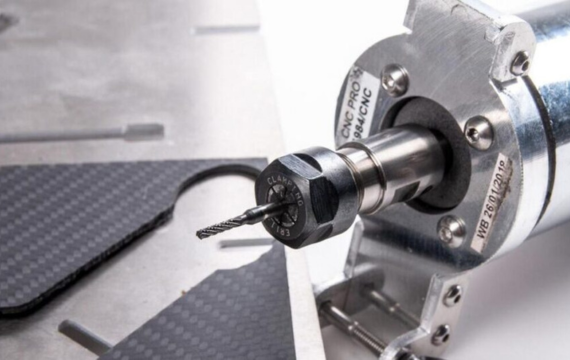
How to Effectively Machine Carbon Fiber
Turning a sheet of carbon fiber into a flawless and usable component requires you to apply a high level of know-how. Here are foolproof pointers to help you process your carbon fiber with ease and utmost efficiency.
- Put on the prescribed PPE to protect your respiratory system and skin from carbon fiber dust.
- Only use sharp machining tools specialized to handle carbon fiber.
- Do not set excessively high feeding speeds and rates as this can lead to heat generation.
- Have an appropriate coolant nearby.
Carbon Fiber Machining Application Fields
Carbon fiber has its unique set of rewards setting it apart from conventional materials like metals. Machined carbon fiber finds usage in:
- Robotics: Its lightness, which does not impact its strength has encouraged its use in robotic arms and robotic frame manufacturing.
- Automotive Industry: In the automotive industry, carbon fiber machining thrives in the production of engine components and spoilers due to its strength and low thermal conductivity.
- Aerospace Industry: Aircraft parts that prioritize lightness are often made from machined carbon fiber. They include wing and tail assemblies.
- Sports Equipment: A myriad of sporting tools including tennis rackets and golf clubs are products of carbon fiber machining.
- Medical Devices: The medical industry continues to benefit greatly from carbon fiber machining, which produces prosthetics and surgical instruments among other medical devices.
- Military Equipment: Defense forces around the world rely on carbon fiber machining to manufacture high-quality helmets, armor, and other military equipment.
Conclusion
As you can see, machining carbon fiber follows the same process like other materials. However, by following the ideas in this article, you can machine the best carbon fiber parts.
For any questions on machining carbon fiber parts, KDM team is here to help.




